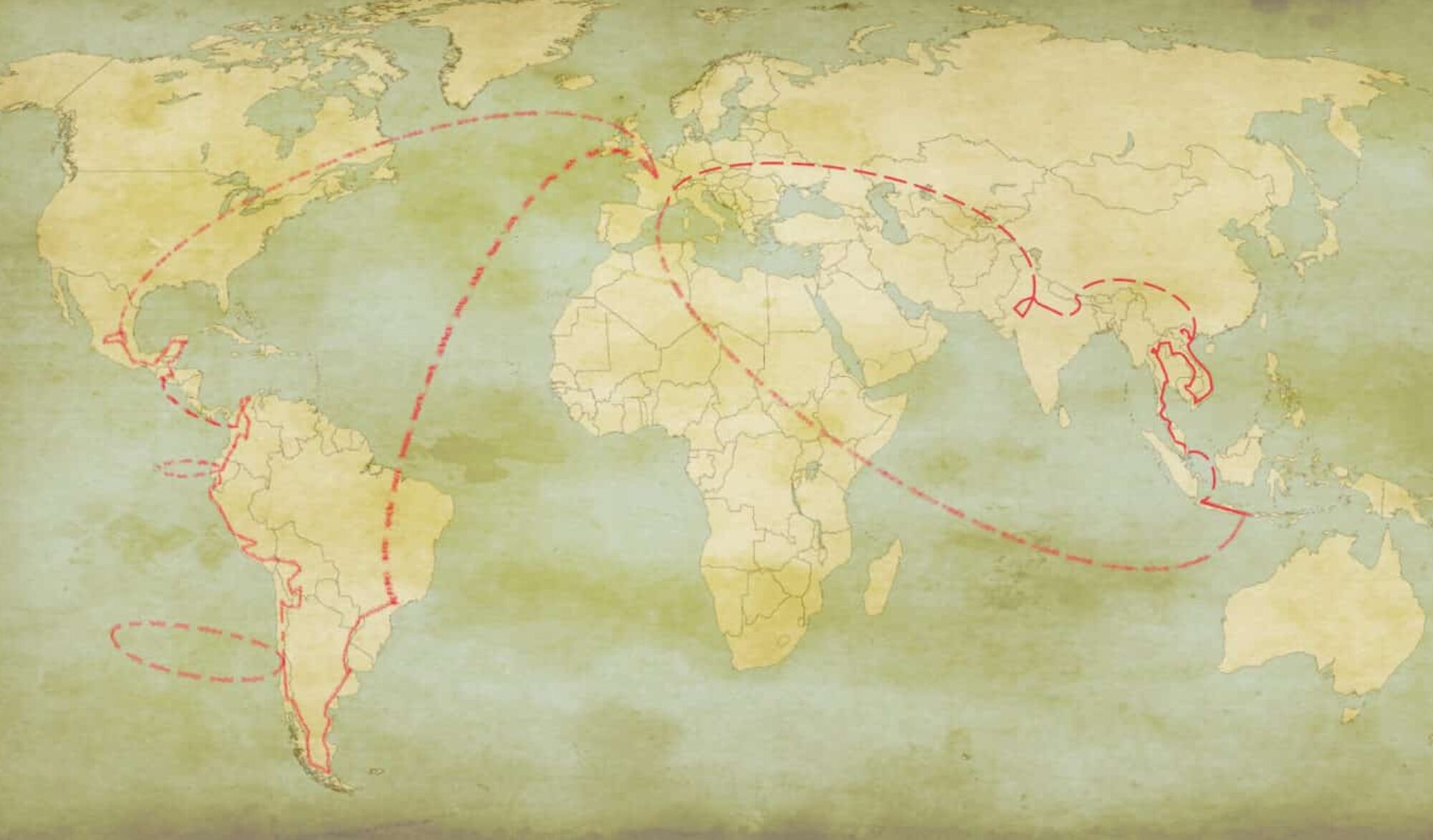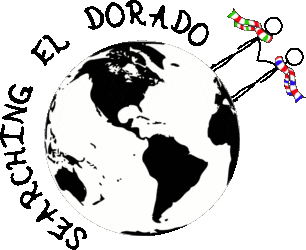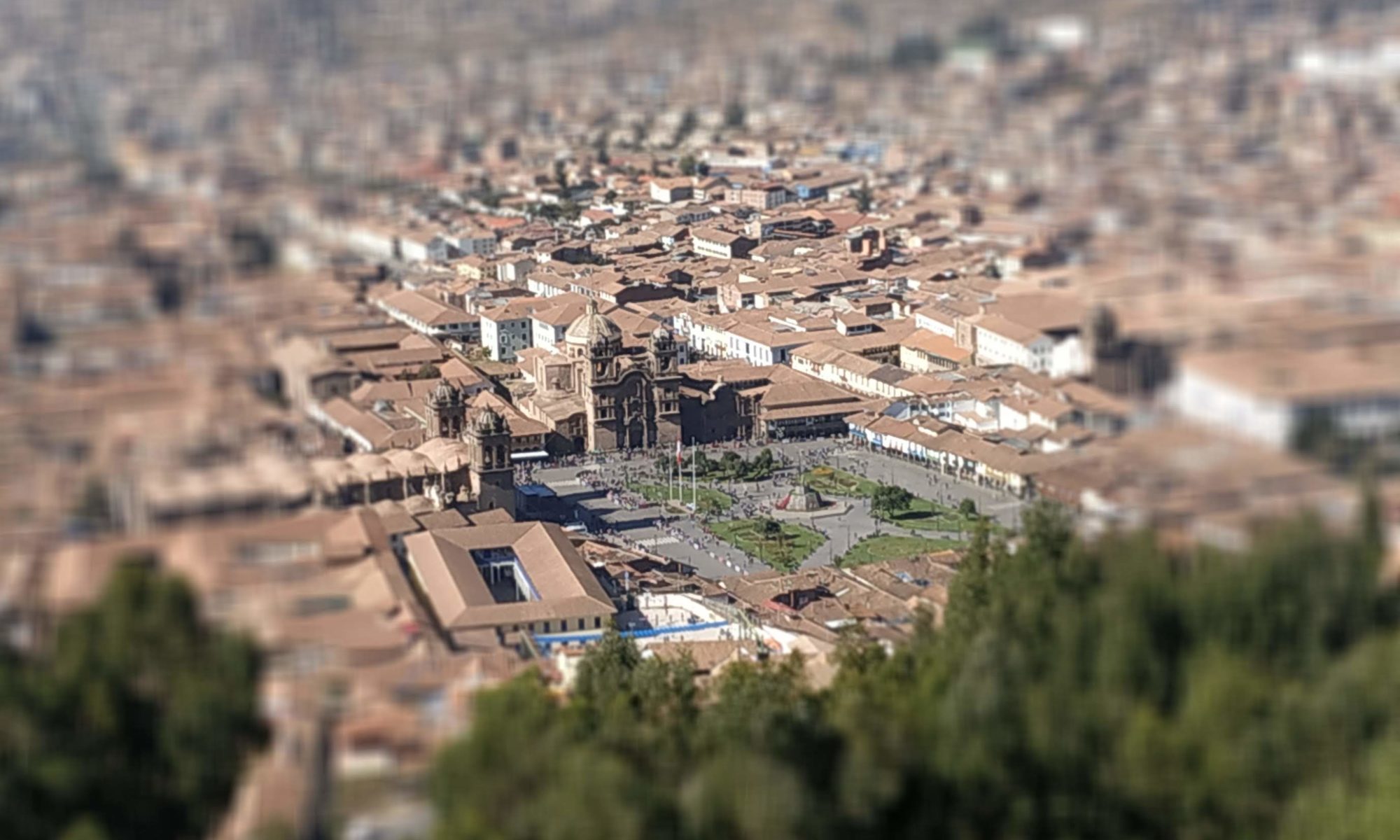Cuzco was the capital and center of the Tawantisuyo, the Inca empire. From it, four main roads departed to reach the four regions of the empire.
A legend says that Manco Capac, the first great Inca, and his wife were sent on Earth by the Sun god to civilize mankind. While they appeared on the Titicaca lake, they established their city in the Cuzco fertile valley.
The Inca empire was very flourishing for many years but when Francisco Pizarro arrived in the region, a succession war was undergoing. It was therefore easy for him to conquer the city in 1534. Even admiring the beauty of the palaces and architecture, Pizarro and his men nonetheless pillage the capital.
Many remains of Cuzco’s past glory are still visible today. The Spanish used many of the foundations of the Incas buildings, as well as part of the street plans, without changing them.
City center
The heart of Cuzco is the plaza de Armas, one of the most beautiful we have seen so far in our trip. It is really big indeed, surrounded by two churches and colonial buildings with arcades. Under them you can find a lot of travel agencies to plan your next trek or visit. Be advise: if you look like a tourist a lot of people will try to sell you something, from a massage to an excursion. While it may be annoying, Cuzco is a very safe city and we never felt threatened.
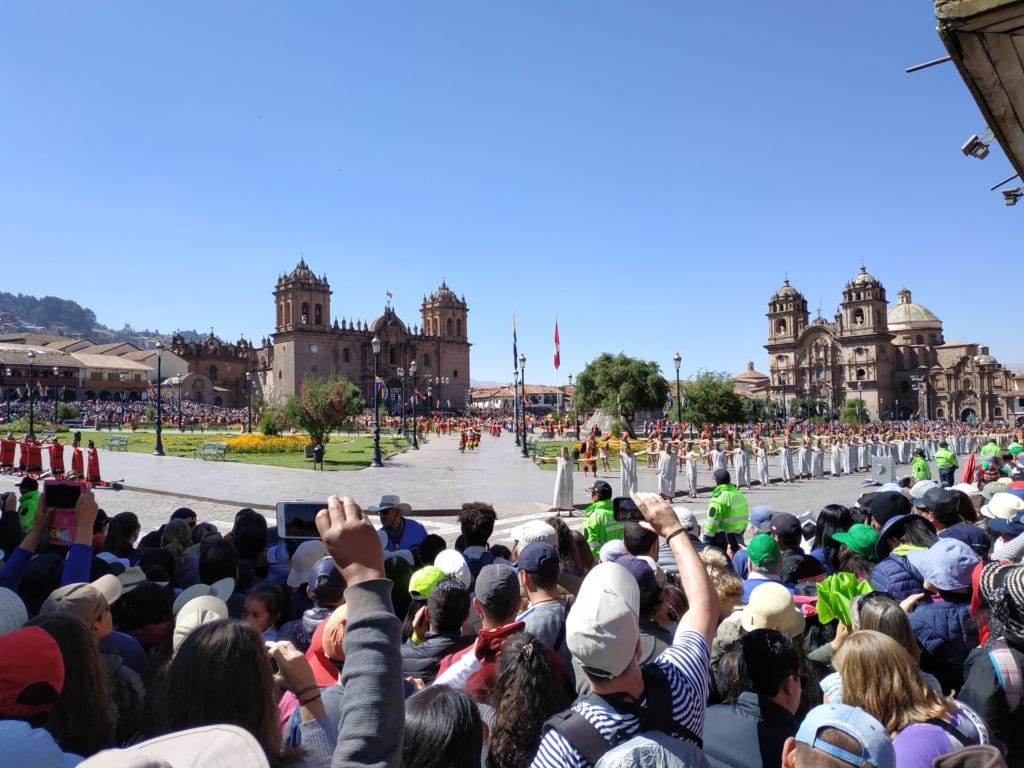
At the center of the square there is a small garden and a small pyramid with a golden statue of Pachacuti, the Inca that began the expansion of the empire, at its top. Every big manifestation or parade either start or finish here.
Churches: the cathedral and some more
The cathedral in the plaza de Armas is actually formed by the merging of three different churches from three different periods. The interior styles are also different: there is a big change from the baroque of the second and the neoclassic of the third! The thing that remained in our head the most was a painting of the last supper with a cuy (guinea pig) as the main dish. It was a way for the missionary to bring the word of the Bible closer to the local indigenous population.
The entrance ticket to the cathedral costs 25 soles. Although, adding just 5 soles you can buy the boleto religioso that allow you to visit also the churches of San Blas and the one of San Cristobal. The cathedral is for sure the best of the three, but the other two deserve a visit as well. For instance in San Blas you’ll find a marvelous baroque pulpit all made of wood. Instead from the church of San Cristobal you’ll have a fantastic view over the city.
The other church on plaza de Armas, the entrance to which is not included in the boleto religioso, is the Jesuits church. As per Jesuit tradition, at least in south America, the façade is in pure baroque style while the interior is full of gold. We visited during a celebration, when the entrance is free. If you do the same, remember to be respectful and avoid taking photos, which are in any case forbidden.
The streets of Cuzco
Maybe the best thing to do in Cuzco is just walking around, admiring the small streets and buildings. Starting from plaza de Armas, you should first head to the Hatun Rumiyoc street. It’s a narrow Inca street along which the buildings show the perfectly cut and fitted stones. You can also see a stone with 12 angles on the same side!
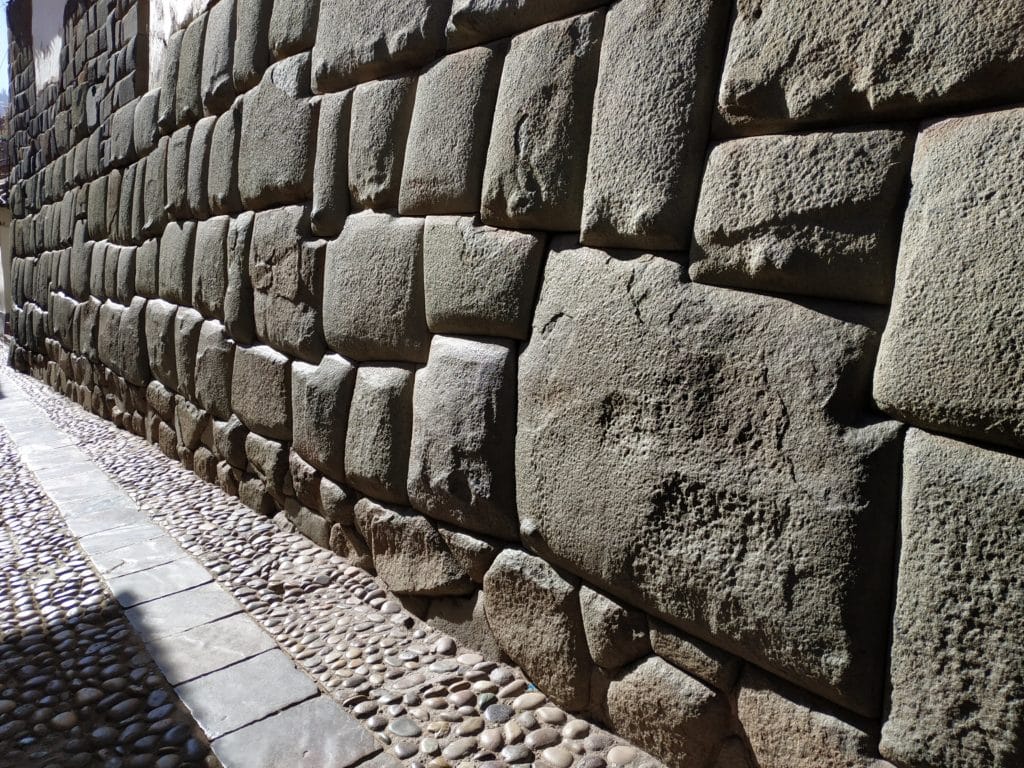
You can continue your tour by going uphill to the San Blas neighborhood. Here you’re going to find not only the church we talked about before, but also small streets, white houses, and a lot of artists with their workshops.
The tour of the city would not be complete without a stop at the San Pedro market. Here you can find souvenirs, hand crafted objects, and food. You can have lunch in the area for as little as 5 soles. It’s also the perfect way to try some of the Peruvian specialties like the aji de gallina, a stew made of chicken, yellow bell pepper and onion.
Boleto turistico
To visit a lot of the sites in Cuzco and the surrounding area you’ll need a boleto turistico, or tourist ticket. The boleto is valid for 10 days and grant you access to 16 sites, the entrance of which cannot be bought separately. There are also three partial tickets, valid only for three days: one for the ruins in the Sacred valley, one for Sacsayuhaman and three other sites, and the last one for all the museums in Cuzco and the immediate surroundings. The normal boleto costs 130 soles, while each partial one is sold for 70 soles. Only one office in town is allowed to sell the tickets, so be careful where you buy it.
The museums in Cuzco are honestly not really worth the price. The Sacred valley, valle sagrado, is instead beautiful and deserves for sure a visit. Sacsayuhaman is also a nice destination if you have time. So, we would suggest to buy the normal boleto if you have time to visit the valle sagrado, Sacsayuhaman, and some other site to make the most of it. Otherwise, a partial boleto for only the valle sagrado might be enough.
Valle Sagrado
The valle sagrado hosts numerous villages and Inca ruins. You can visit it on several days or, if you don’t really have time, book a one day tour departing from Cuzco. We joined a so-called Valle Sagrado VIP tour. For 65 to 80 soles, it included the transportation and guided tour to the sites of Chinchero, Moray, the salineras de Maras, Ollantaytambo, and Pisac. In addition we also visited a textile and a jewelry workshops. The lunch was also included in the price: a really nice buffet.
As said before, many people will try to sell you this kind of tour on the street. Since a lot of them don’t belong to any agency, you cannot be sure of what they are selling to you. To avoid bad surprises, just ask to go in the physical agency before buying any tour.
The tour day is quite intense and you are going to see a lot of stuff. We were nonetheless satisfied by the time we spent in each place. The only exception might be Ollantaytambo: we did not have much time to see the nice village, but we also did not felt motivated enough to return another day.
A lot of different agencies in Cuzco offer basically the same tour. We found only slight changes in what they were offering and the cost, so it might still be worth for you to go around asking for the best conditions and price.
To enter all the sites, except the salineras, you’ll need the boleto turistico, partial or full version.
Chinchero
The first visit in our tour, Chinchero, hosts an impressive number of agricultural terraces. Here the potatoes were, and still are, the main product. Close to the terraces, a church was built over an old Inca temple. Apparently, the opening hours of the church are quite random. However, we were lucky enough to find it open. The walls are completely covered by nice motives inspired not only by religion but also by nature.
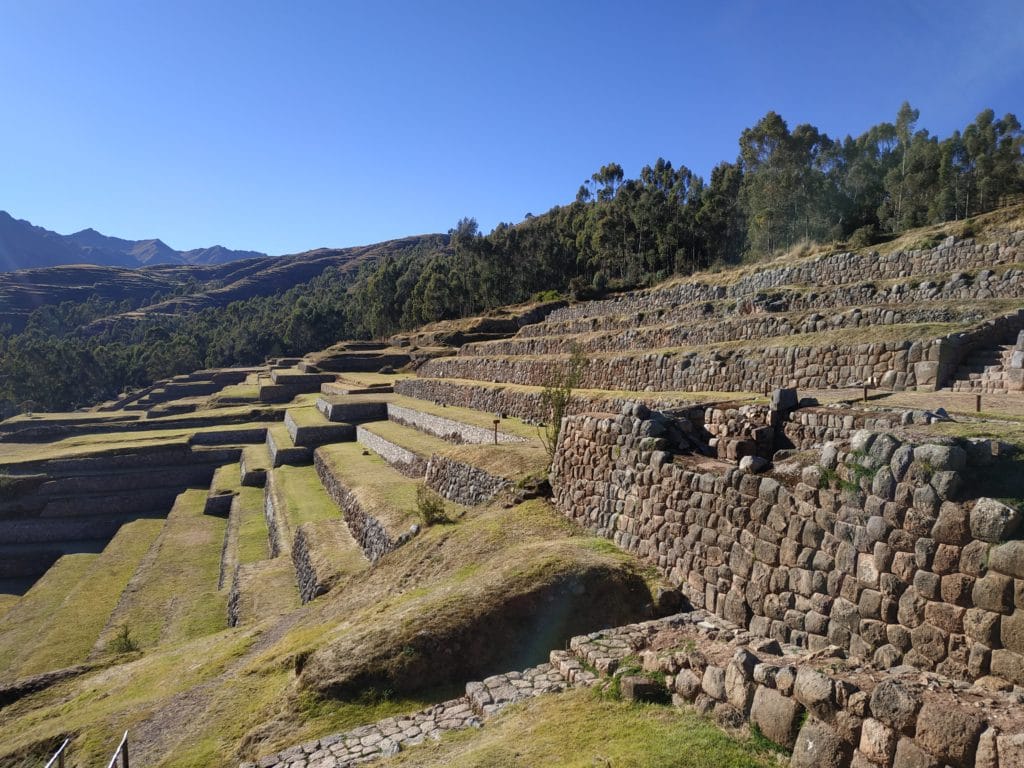
In the same village we visited a textile center where they explained how the alpaca wool is traditionally dyed. Only natural ingredients are used, like fruits, soil, or small insects living on cacti. It was a really interesting demonstration!
Moray
The Incas were not only master builders but also master farmers. They were able to grow vegetables at a much higher altitude than usual. To do it, they needed to acclimatize the plants little by little, a task performed using laboratories like the one of Moray.
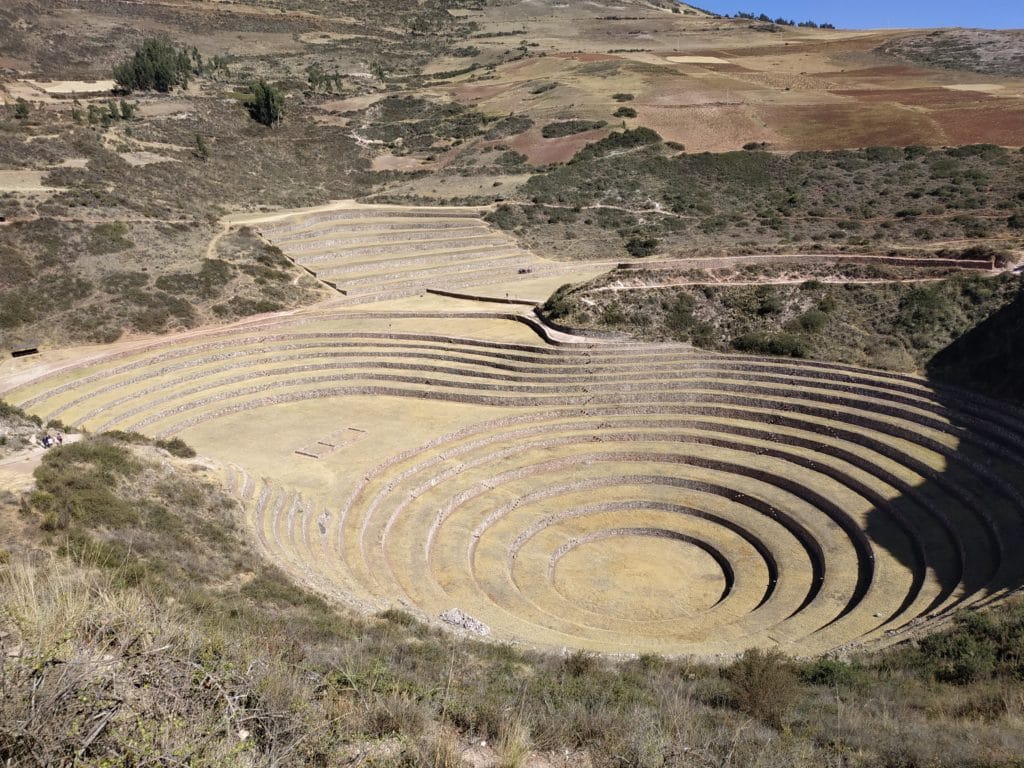
Here plants like potatoes, corn and quinoa were planted on different terraces. Each of these had a different microclimate, from a warmer lower terrace to a colder upper one. Each year, the stronger plants were moved to a higher terrace. Once they had proven they could grow at in certain conditions, the seeds were ready to be planted for massive production.
The site and the technique are truly impressive. You can actually feel the different microclimates when moving around the laboratory. The cleverness of the Inca just kept surprising us!
Salineras de Maras
Some of these pools to extract salt were used already by the Incas. Many of them were added later, arriving to a total of 4000 pools. The naturally salted water springs from the mountain and fills them, leaving the salt once it evaporates. It is the only entrance not included in the boleto, but the visit is really worth it. The view of the white pools at the bottom of the narrow valley is truly beautiful.
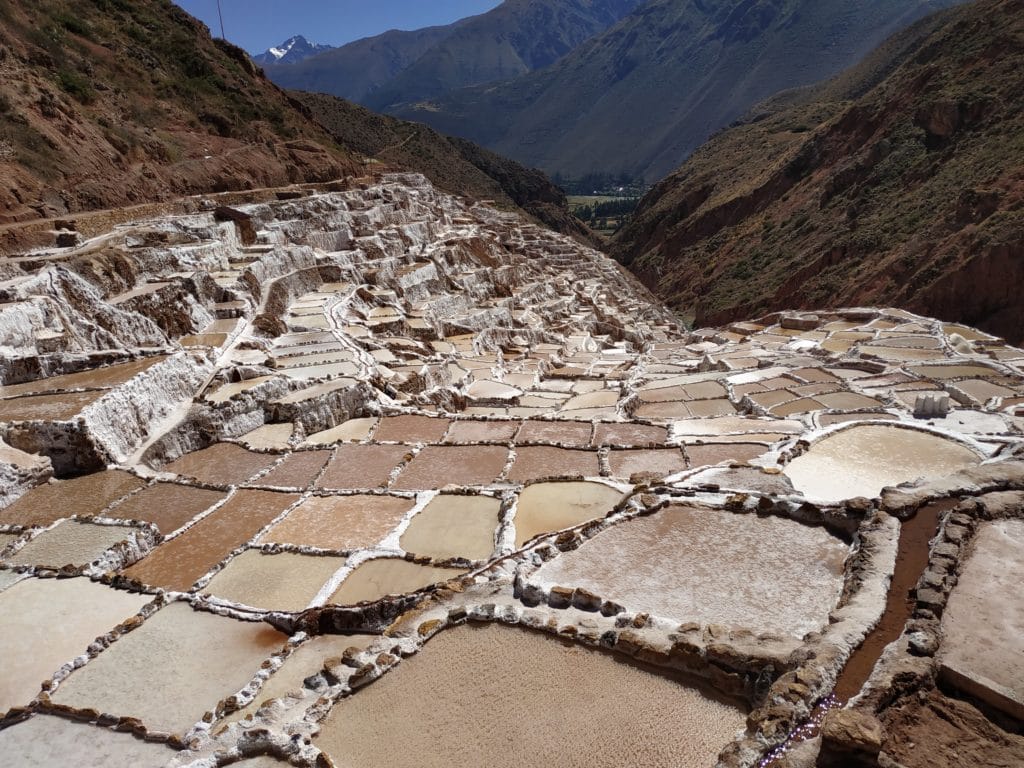
Note that they recently stopped letting people walk freely between the salt pools. In the last years much garbage was found in them, left there by uncaring tourists. Since the salt is the main source of revenue for around 400 families, they decided to restrict the access to it. Nonetheless, it is still very beautiful to see from a distance.
Ollantaytambo
Ollantaytambo is a beautiful village that maintains its original Inca plan. Narrow streets, water flowing at their side, and houses built on Inca walls, everything here reminds us of the past.
The village is dominated by the ruins, maybe the most impressive ones of the whole valley. Huge terraces and a lot of stairs leads you to the top of the hill where you have a magnificent view of the village and the surrounding area. Here you’ll find the sun temple, the construction of which stopped before completion. The already erected wall is nonetheless impressive: three huge stones, each weighting at least 50 tons. And they were transported from a quarry 7 km away!
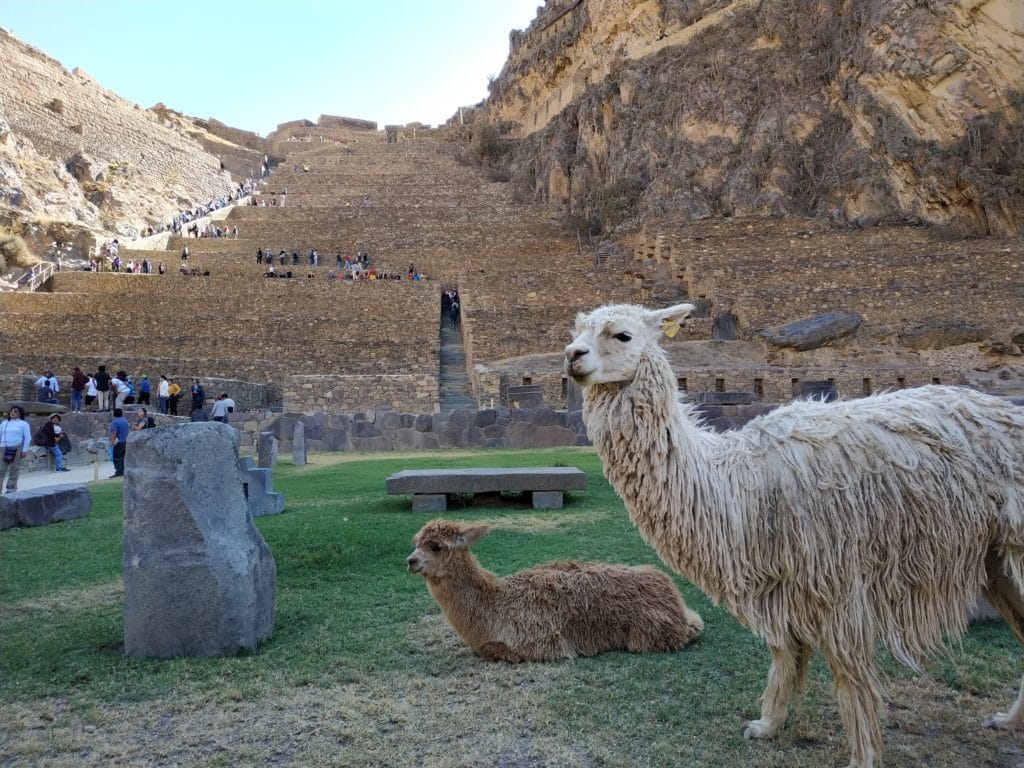
Pisac
A really well preserved Inca village on the top of a mountain. You can walk among the ruins of houses, workshops and temples, and admire the many, many terraces that descend to the modern village.
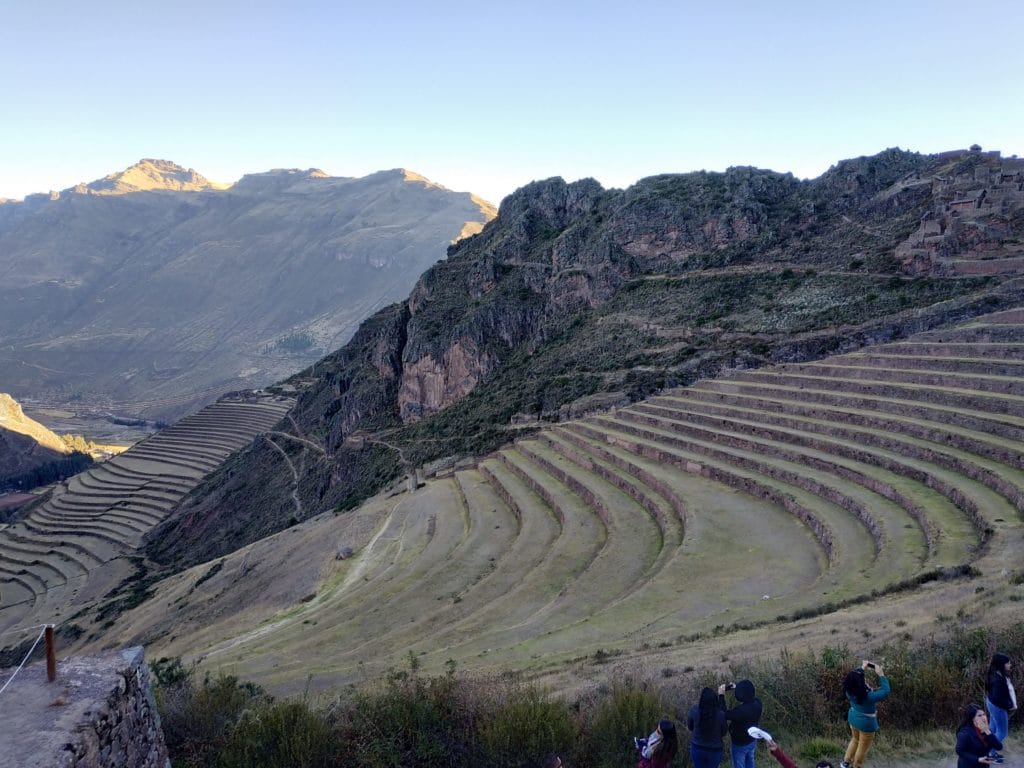
We also visited a jewelry workshops in the modern Pisac. They work mainly with silver and they told us how to recognize eventual fake pieces. The fake silver have an opaque, almost brown, color. The best quality silver is 950, a number that should be engraved on the pieces you are buying.
They sometimes add stones or pieces of seashells to a silver frame. Each of the pieces is shaped individually, so each jewel is unique!
Sacsayuhaman
Overlooking Cuzco, the ruins of Sacsayuhaman are one more testimony of the greatness of the Inca civil engineering. The site is made of walls composed by huge rocks weighting several tons. In the middle of it there is a big esplanade where celebrations are still held today. From the complex you have also one of the best view over Cuzco.
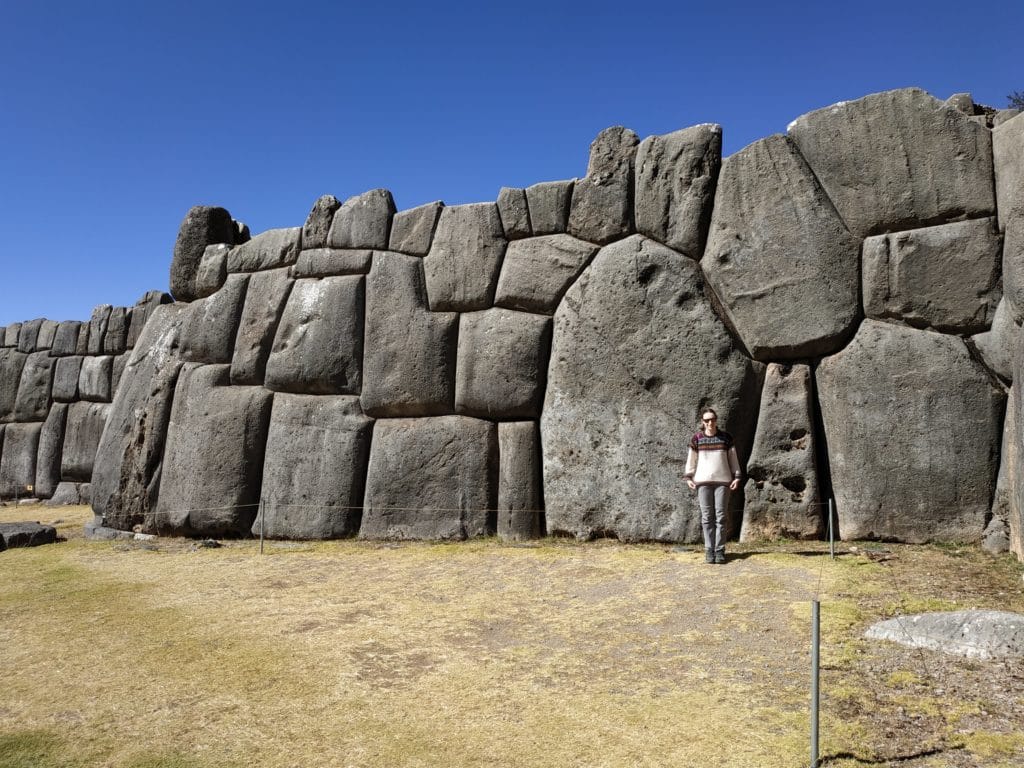
Make the most of the boleto
If you bought the full boleto, and you still have time, you can do some other visit. Some of them are in the city so you don’t even have to move that much. We went to the Centro Qosqo de Arte Nativo for a dance show. Several traditional dances and music from different Peruvian regions were presented. It’s really interesting, especially if you don’t have the opportunity of assist to any festival during your visit.
We also went to the museum just in front of the theater, the Museo de Sitio de Qoricancha. It is quite small and old, but it is a nice way to spend some free time. We were nonetheless glad we did not have to pay more to visit it.
Inti Raymi
We were so lucky to arrive in the city for the celebrations for the Corpus Christi, a Catholic festivity that falls 60 days after Easter. On this occasion each neighborhood parades the statue of its patron saint to the cathedral in Plaza de Armas.
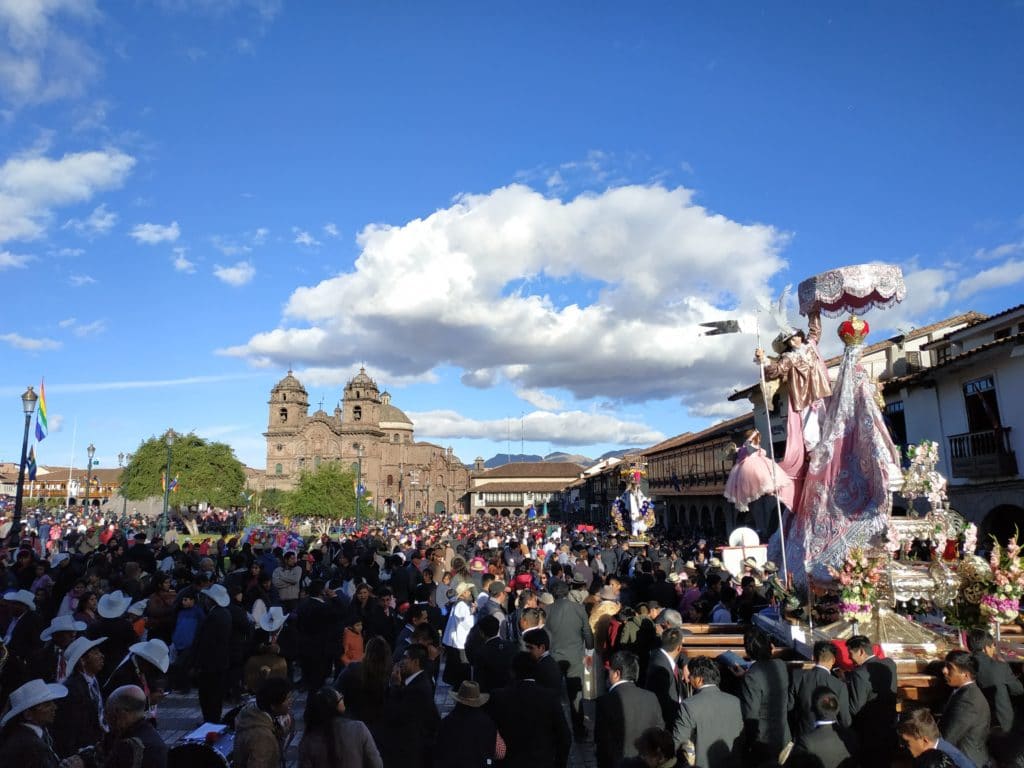
There is also a typical food associated to the festivity: the Chiri Uchu. It includes a piece of roasted cuy, fish eggs, an algae, a small fried tortilla, cheese, chicken, and some corn. These ingredients come from all the regions, from the top of the Andes to the ocean, as a symbol of unity. It is usually served cold. If you want to try, you can find many trucks serving it in plaza San Francisco.
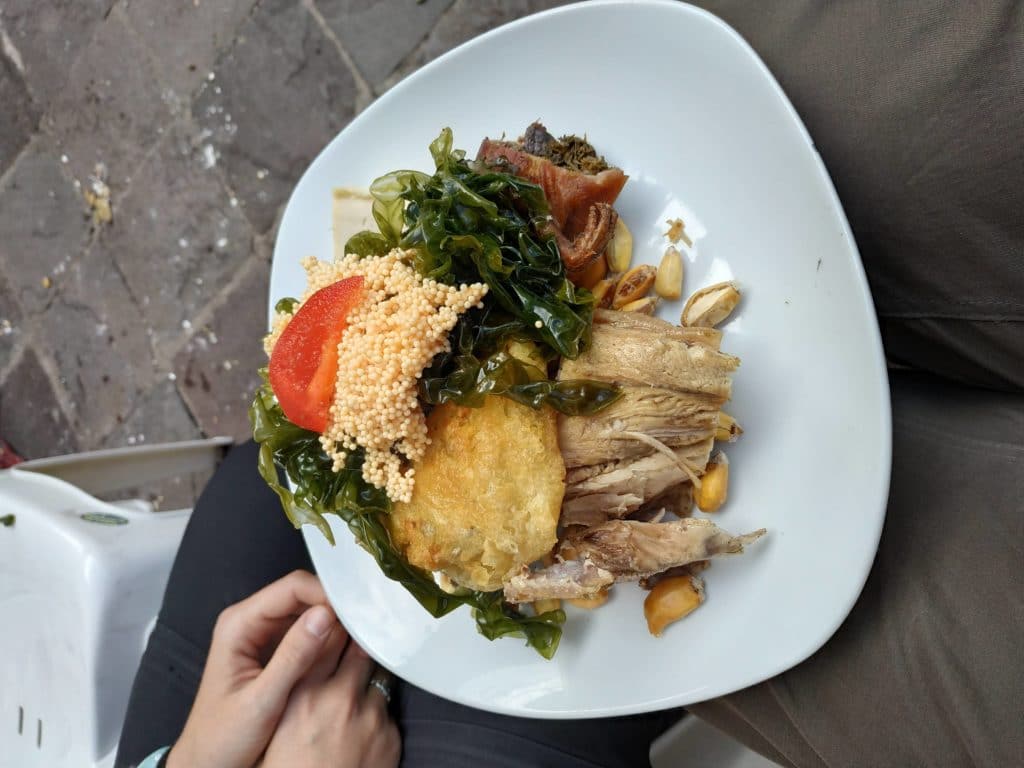
For two days after that we saw different parades, mainly of traditional dances from the different Peruvian regions. It was beautiful to see the elaborated costumes and the differences in the music and in the dances of peoples living not so far one from the other.
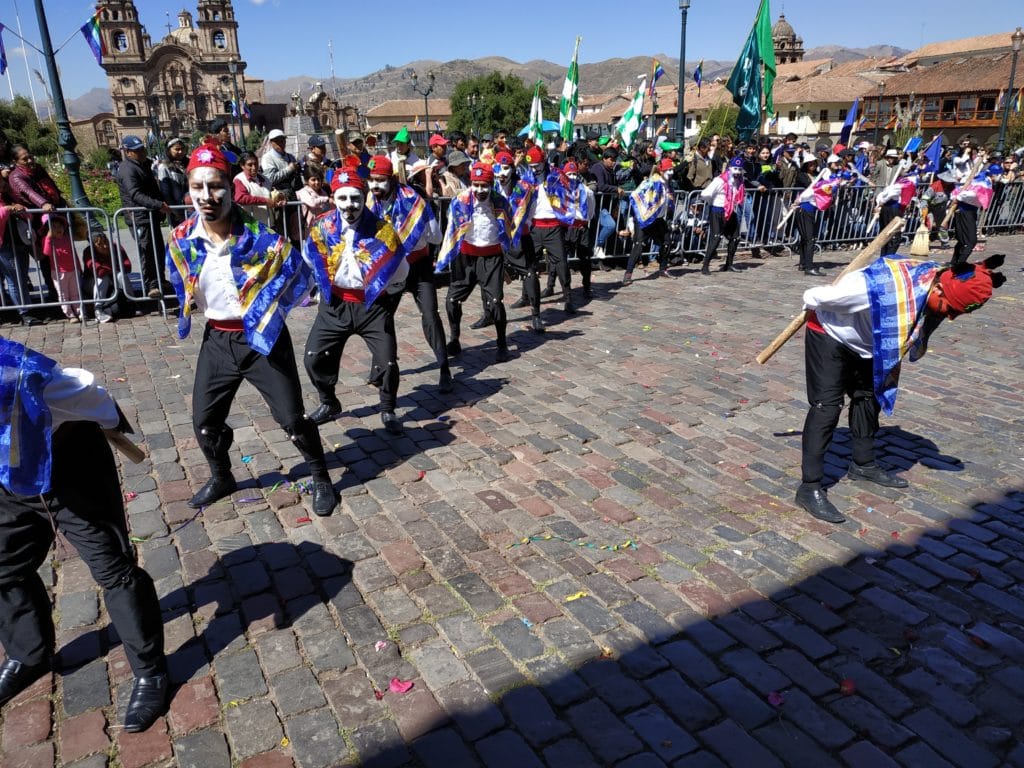
The celebrations culminated June 24th, with the Inti Raymi, the Sun festival. It is an old Inca festivity, related to the winter solstice. A huge reconstruction of the original celebration takes place into three main points. These are, in order, Qoricancha, which was the old Sun temple, plaza de Armas, and Sacsayuhaman.
Hundreds of actors perform the ancient rite, all dressed as old Incas warriors, shamans, normal people, a king and a queen. All of the recited lines are in Quechua, so it was impossible for us to follow the true meaning of what was happening. But it was in any case incredible to see the performance.
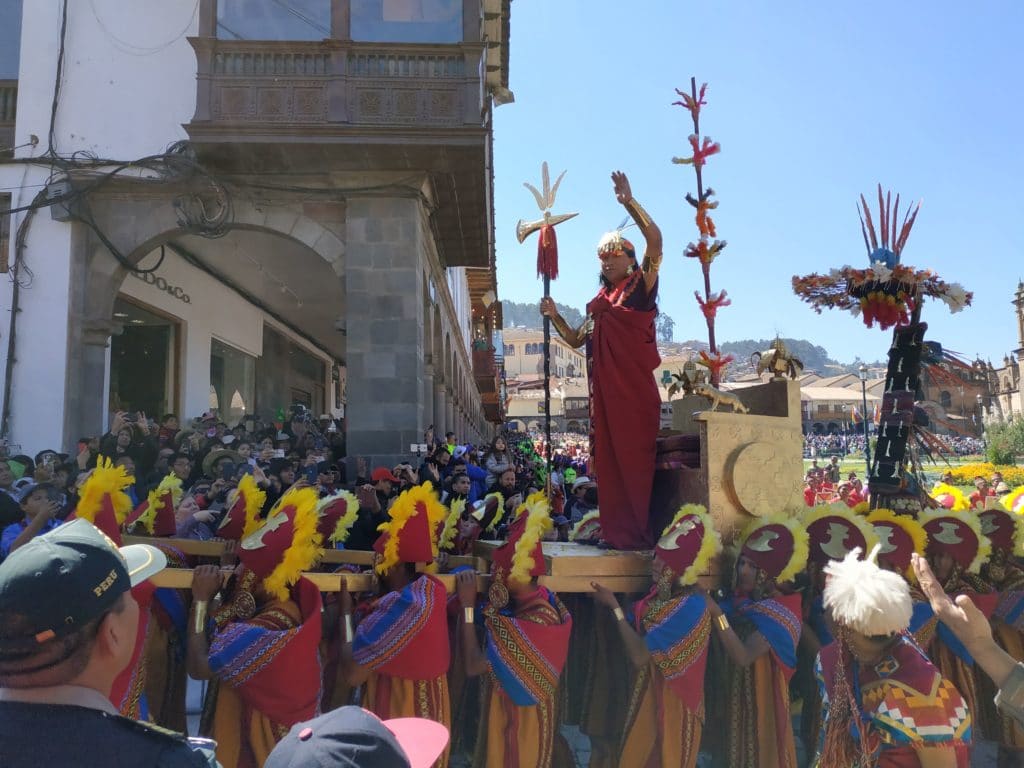
The last part, in Sacsayuhaman, takes place on a big esplanade. You can buy a seat on some temporary stand they put for the occasion. Although, these seats costs hundreds of dollars and tend to sell out many months before the Inti Raymi. We saw only the parts in Qoricancha and plaza de Armas, among a huge crowd, but we were already quite impressed by the ceremony. We did not assist to the last part of the ceremony, not only because of the price but also because that same afternoon we needed to start the Salkantay trek, so we did not have much time!
To not miss any of our adventure, subscribe to our newsletter!
